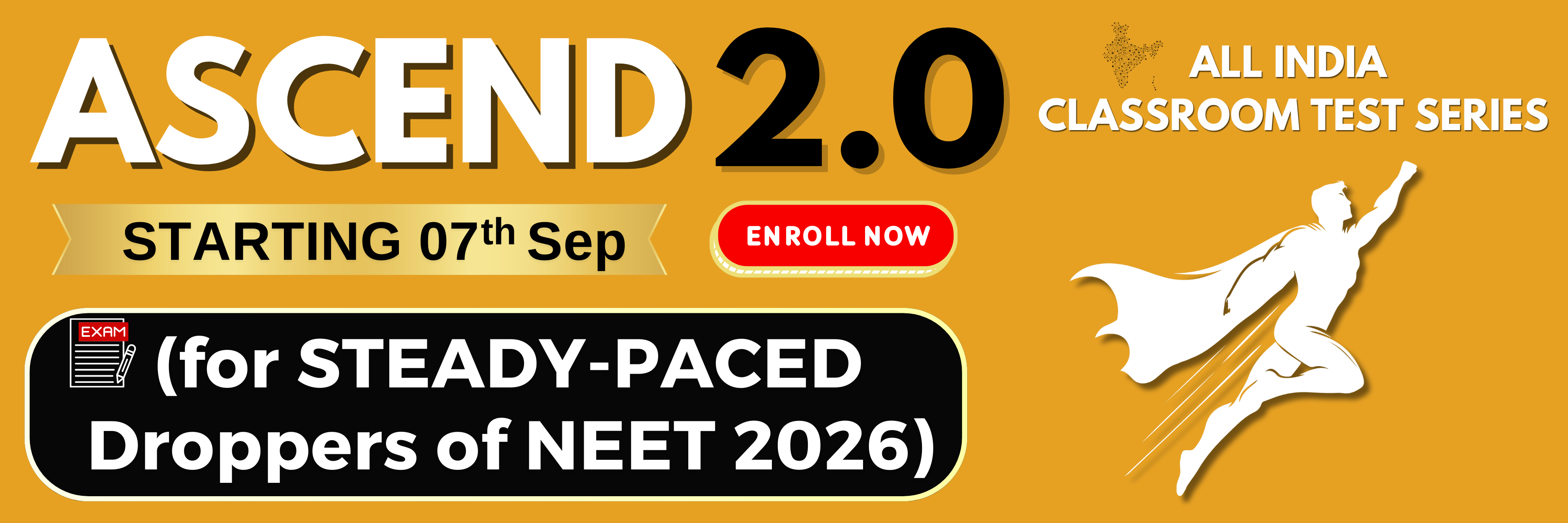Go through the following figures. Identify these muscles (A, B and C):

(1) A - Smooth muscles, B - Striated muscle, C - Cardiac muscle
(2) A - Cardiac muscles, B - Smooth muscle, C - Striated muscle
(3) A - Striated muscles, B - Smooth muscle, C - Cardiac muscle
(4) A - Involuntary muscles, B - Voluntary muscle, C - Heart muscle
निम्नलिखित आरेखों को जांचें। इन पेशियों (A, B और C) को पहचानें :

(1) A - चिकनी पेशियां, B - रेखित पेशी, C - हृद्पेशी
(2) A - हृद्पेशी, B - स्मूथ मसल, C - स्ट्राइक मसल
(3) A - रेखित पेशियां, B - चिकनी पेशी, C - हृद्पेशी
(4) A - अनैच्छिक पेशियाँ, B - ऐच्छिक पेशियाँ, C - हृदपेशी


Nervous tissue is made up of neurons and neuroglial cells. Point out which of the following statement about these two cells is false:
I. Neuroglia make up more than one-half the volume of neural tissue in our body
II. Neuroglia protect and support neurons
III. When a neuron is suitably stimulated, an electrical disturbance is generated which swiftly travels along its cytosol
IV. This disturbance at the neuron endings triggers stimulation or inhibition of adjacent neurons or other cells
(1) Only I and IV
(2) Only II and III
(3) Only III
(4) Only IV
तंत्रिका ऊतक तंत्रिका कोशिकाओं और तंत्रिकाबंध कोशिकाओं से बना होता है। इन दो कोशिकाओं के विषय में निम्नलिखित में से कौन सा कथन गलत है:
I. तंत्रिकाबंध कोशिकाएं हमारे शरीर में तंत्रिका ऊतक की मात्रा का आधे से अधिक भाग बनाती हैं।
II. तंत्रिकाबंध कोशिकाएं तंत्रिका कोशिकाओं का रक्षण और समर्थन करती हैं।
III. जब एक तंत्रिका कोशिका उपयुक्त रूप से उद्दीपित होता है, तो एक विद्युत विक्षोभ उत्पन्न होता है जो तेजी से अपने कोशिका द्रव्य के साथ चलती है।
IV. तंत्रिका कोशिका छोरों पर यह विक्षोभ आसन्न तंत्रिका कोशिका या अन्य कोशिकाओं की उत्तेजना या निषेध को प्रेरित करती है।
(1) केवल I और IV
(2) केवल II और III
(3) केवल III
(4) केवल IV
The epithelium of air sacs of lungs and the walls of blood vessels is:
(1) Simple cuboidal epithelium
(2) Simple squamous epithelium
(3) Stratified squamous epithelium
(4) Simple columnar epithelium
फेफड़ों की वायु थैली और रक्त वाहिकाओं की दीवारों की उपकला होती है:
(1) सरल घनाकार उपकला
(2) सरल शल्की उपकला
(3) स्तरित शल्की उपकला
(4) सरल स्तम्भ उपकला
Muscles of intestine and blood vessels are:
(1) Involuntary and smooth
(2) Voluntary and smooth
(3) Involuntary and striated
(4) Voluntary and striated
आंत और रक्त वाहिकाओं की मांसपेशियां होती हैं:
(1) अनैच्छिक और चिकनी
(2) ऐच्छिक और चिकनी
(3) अनैच्छिक और रेखित
(4) ऐच्छिक और रेखित
Intercalated discs are the communication junctions between the cells of:
(1) Cardiac muscles
(2) Striped muscles
(3) Adipose tissue
(4) Nerve and Striated muscles
अंतर्विष्ट डिस्क,.................की कोशिकाओं के बीच संचार संधियाँ होती हैं।
(1) हृद् पेशियाँ
(2) रेखित पेशी
(3) वसीय ऊतक
(4) तंत्रिका और रेखित पेशियाँ
The cells lining the blood vessels belong to the category of:
(1) Columnar epithelium
(2) Connective tissue
(3) Smooth muscle tissue
(4) Squamous epithelium
रक्त वाहिकाओं को अस्तर करने वाली कोशिकाएँ..................की श्रेणी में आती हैं।
(1) स्तंभकार उपकला
(2) संयोजी ऊतक
(3) चिकना पेशी ऊतक
(4) शल्की उपकला
The supportive skeletal structures in the human external ears and in the nose tip are example of:
(1) Ligament
(2) Areolar tissue
(3) Bone
(4) Cartilage
मानव के बाहरी कान और नाक की नोक में सहायक कंकाल संरचनाएं..............का उदहारण हैं।
(1) स्नायु
(2) अवकाशी ऊतक
(3) अस्थि
(4) उपास्थि
Identify the tissue shown in the diagram and match with its characteristics and its location:
(1) Skeletal muscle, shows striations and closely attached with the bones of the limbs
(2) Smooth muscles, show branching, found in the walls of the heart
(3) Cardiac muscles, unbranched muscles, found in the walls of the heart
(4) Striated muscles, tapering at both-ends, attached with the bones of the ribs
आरेख में दिखाए गए ऊतक की पहचान कीजिए और इसकी विशेषताओं और स्थान के साथ सुमेलित कीजिए:
(1) कंकाल पेशी, रेखांकन दर्शाती है और पादों की अस्थियों के साथ निकट संपर्क में होती हैं।
(2) चिकनी पेशियाँ, शाखन दर्शाती हैं, हृदय की दीवारों में पाई जाती हैं।
(3) हृद्पेशी, अशाखित पेशिय़ाँ, हृदय की दीवारों में पाई जाती हैं।
(4) रेखित पेशियाँ, दोनों सिरों पर शुंडाकार, पसलियों की अस्थियों के साथ जुड़ी होती हैं।
Which of the following statement correctly defines a tissue?
(1) A group of cells having different anatomy can perform a specific function.
(2) An aggregate of similar cells forming a definite kind of structure performing a specific function.
(3) Single cell which has ability to perform specific functions in association with other cells.
(4) Two or more organs having similar cells perform similar functions in association with each other.
निम्नलिखित में से कौन सा कथन एक ऊतक को सही ढंग से परिभाषित करता है?
(1) विभिन्न शारीरिक रचना वाले कोशिकाओं का एक समूह जो एक विशिष्ट कार्य कर सकता है।
(2) एक समान कार्य करते हुए एक निश्चित प्रकार की संरचना बनाने वाली समान कोशिकाओं का एक समूह।
(3) एकल कोशिका जिसमें अन्य कोशिकाओं के साथ मिलकर विशिष्ट कार्य करने की क्षमता होती है।
(4) समान कोशिकाओं वाले दो या अधिक अंग एक दूसरे के साथ मिलकर समान कार्य करते हैं।
What is the association of two or more organs interacting physically or chemically to perform a particular function called as :
(1) Tissue-organ system
(2) Organ system
(3) Cellular-tissue system
(4) Animal tissue
किसी विशेष कार्य को करने के लिए शारीरिक या रासायनिक रूप से अन्योन्यक्रिया करने वाले दो या दो से अधिक अंगों को क्या कहा जाता है:
(1) ऊतक-अंग तन्त्र
(2) अंग तन्त्र
(3) कोशिकीय-ऊतक तन्त्र
(4) जन्तु ऊतक







